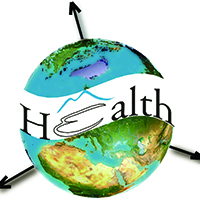Mapping the risk for transmission of urban schistosomiasis in the Brazilian Northeast

Submitted: 29 January 2020
Accepted: 31 July 2020
Published: 29 December 2020
Accepted: 31 July 2020
Abstract Views: 1969
PDF: 762
HTML: 42
HTML: 42
Publisher's note
All claims expressed in this article are solely those of the authors and do not necessarily represent those of their affiliated organizations, or those of the publisher, the editors and the reviewers. Any product that may be evaluated in this article or claim that may be made by its manufacturer is not guaranteed or endorsed by the publisher.
All claims expressed in this article are solely those of the authors and do not necessarily represent those of their affiliated organizations, or those of the publisher, the editors and the reviewers. Any product that may be evaluated in this article or claim that may be made by its manufacturer is not guaranteed or endorsed by the publisher.
Similar Articles
- Ândria Silveira Almeida, Caíque Jordan Nunes Ribeiro, Camila Caroline Carlini, Rogério Silva Santos, Allan Dantas dos Santos, Débora Santos Tavares, Karina Conceição Gomes Machado de Araújo, Tatiana Rodrigues de Moura, Priscila Lima dos Santos, Spatial and spatiotemporal dynamics of visceral leishmaniasis in an endemic North-eastern region of Brazil , Geospatial Health: Vol. 15 No. 2 (2020)
- Vicente Y. Belizario, John Paul Caesar R. delos Trinos, Berne Silawan, Chiqui M. De Veyra, Agapito Hornido, Hansel Amoguis, Dominic Basalo, Cherry Dema-ala, Irenn Mantilla, Rosele Layan, The use of geographic information system as a tool for schistosomiasis surveillance in the province of Davao del Norte, the Philippines , Geospatial Health: Vol. 12 No. 2 (2017)
- Farideh Azimi, Sadegh Shirian, Saranaz Jangjoo, Arman Ai, Tahereh Abbasi, Impact of climate variability on the occurrence of cutaneous leishmaniasis in Khuzestan Province, southwestern Iran , Geospatial Health: Vol. 12 No. 1 (2017)
- Yuanhua Liu, Jun Zhang, Michael P. Ward, Wei Tu, Lili Yu, Jin Shi, Yi Hu, Fenghua Gao, Zhiguo Cao, Zhijie Zhang, Impacts of sample ratio and size on the performance of random forest model to predict the potential distribution of snail habitats , Geospatial Health: Vol. 18 No. 2 (2023)
You may also start an advanced similarity search for this article.

 https://doi.org/10.4081/gh.2020.861
https://doi.org/10.4081/gh.2020.861





